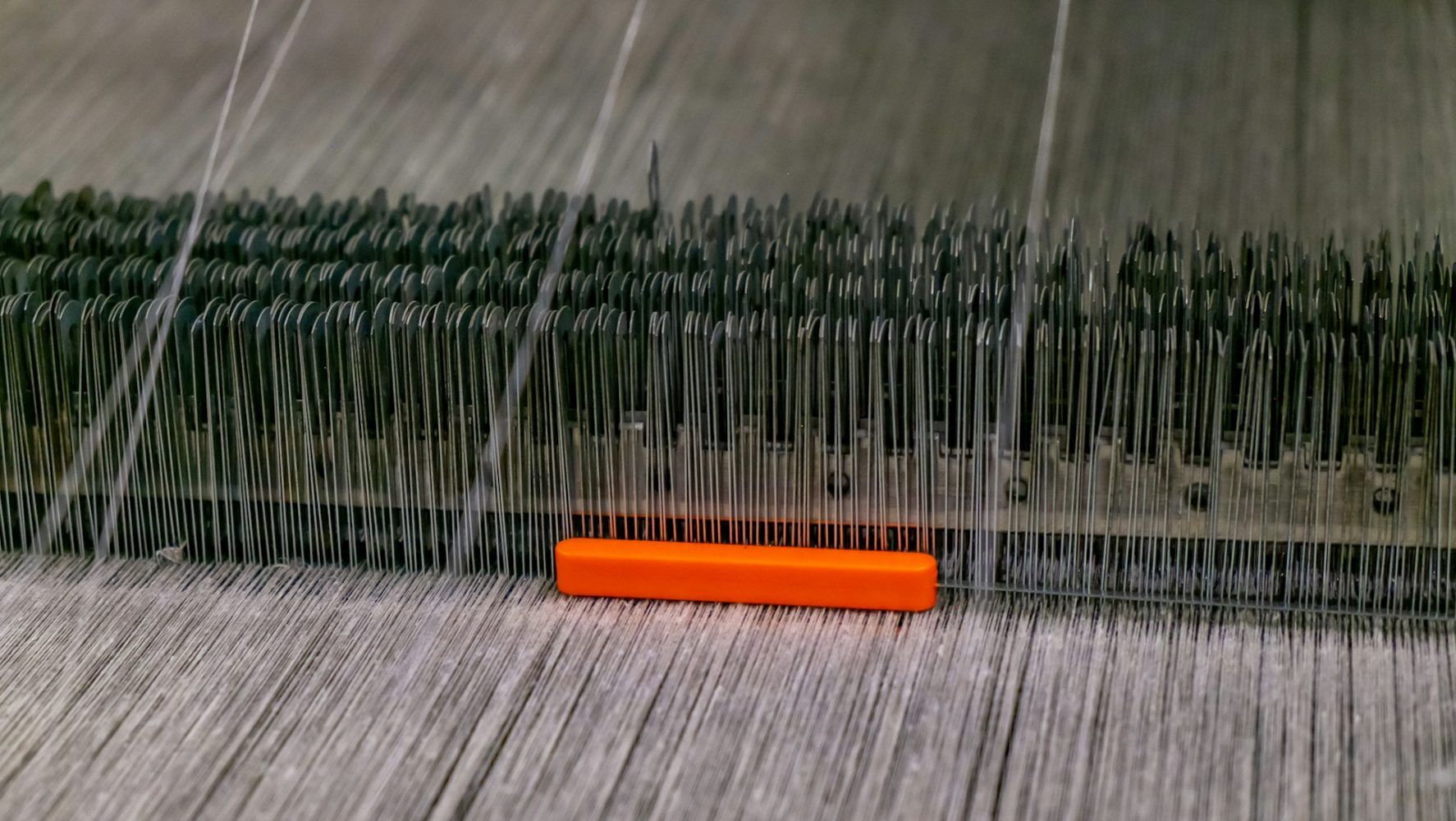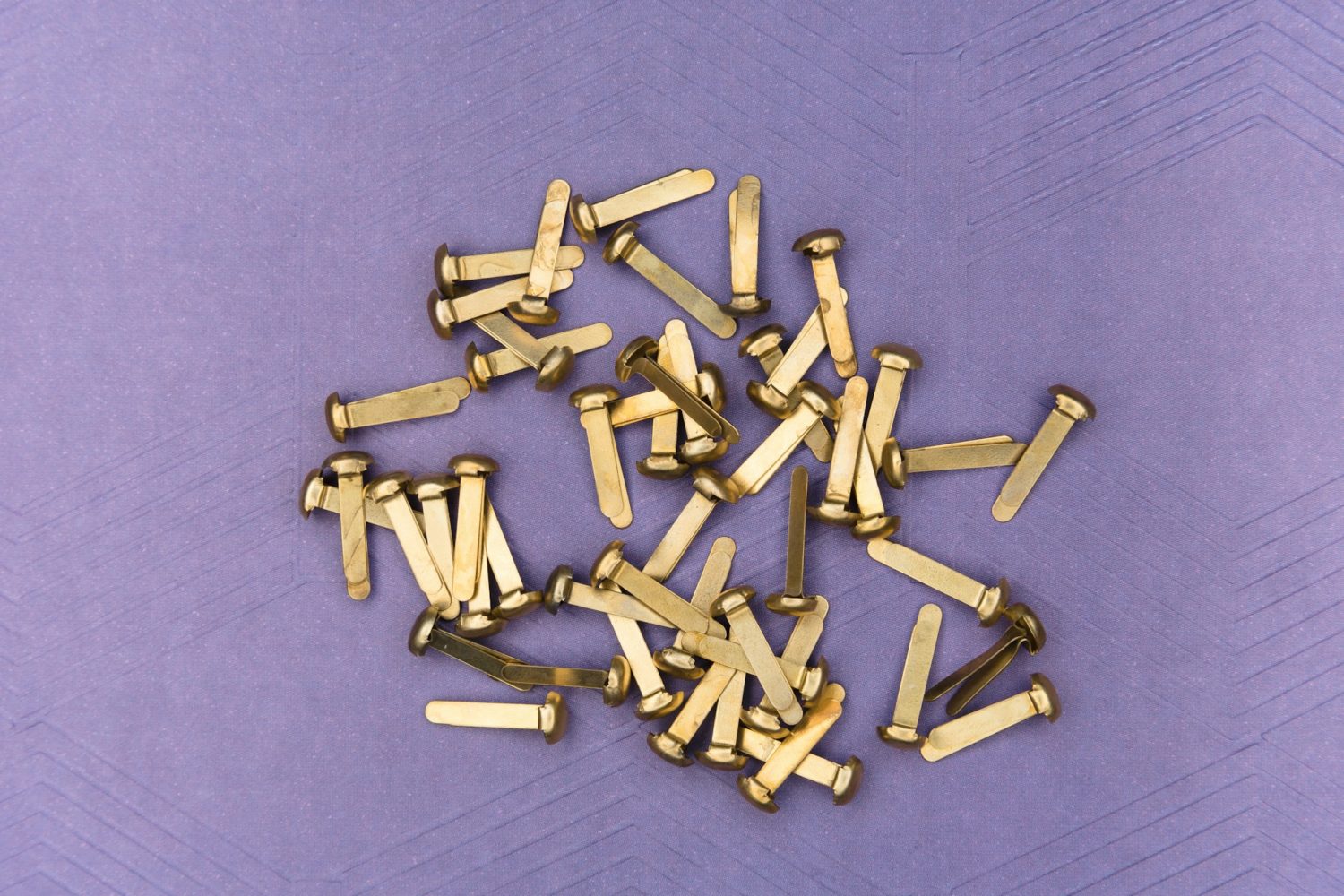Your product is flying. The team is small, orders spike after every post, and someone is still topping up packets on a scale because that is how day one began. By lunchtime support has two tickets about short packs. By evening your dashboard says out of stock while three trays of parts sit on the shelf. Nothing is broken, yet the day leaks profit.
The problem is not growth. It is the way you count. A gram target assumes every unit weighs the same. Real items do not behave that neatly. Coatings, supplier mixes, and humidity nudge unit mass just enough to turn a perfect gram value into a miss on the label. You pay twice. One customer gets less than promised. Another gets a quiet giveaway that eats margin.
This guide gives you a time boxed plan to move from weight-based fills to verified piece counts in one month without pausing sales. You will see what to measure in week one, how to pick an optical counter that matches your parts, how to barcode presets so setup errors vanish, and how to prove the return with numbers that your team will trust. Along the way you will get simple acceptance tests and one page recipes that make the change stick.
If you want refunds down, speed up, and inventory that finally reflects what is on the shelf, you are in the right place.
Day one to five audit your current reality
You cannot improve what you have not measured. The first week is about seeing your process as it truly runs, not as it appears in a playbook. Capture a few honest numbers, compare them to the promise on your label, and you will know exactly where counting hurts the most.
Measure short rate, giveaway, and real cycle time
Watch twenty orders per top SKU from start to finish. For each order, record the promised count, the actual count from a quick recount, the pack time, and whether you added a safety margin on the scale.
Now turn those notes into three baseline metrics.
- Short rate
Count the number of orders that opened under the promised pieces, then divide by the total observed. If three orders out of twenty were short, the short rate is three divided by twenty which equals zero point one five or fifteen percent. That is the support load you are creating every day. - Giveaway percent
For packets filled by mass with a safety margin, convert the extra grams into parts. Suppose a packet promises one hundred pieces with an average unit mass of zero point five gram. A one percent safety on a fifty gram target adds zero point five gram. Divide zero point five by zero point five to get one extra piece per packet, which is a one percent giveaway. Multiply by daily volume to see the silent cost. - Real cycle time
Use a stopwatch for twenty consecutive packets. Include label steps, checks, and any top ups. Average the times and note the spread. A true baseline might read fifty two seconds average with a range of forty eight to sixty one. The range tells you how much the process swings under stress.
These three numbers will steer every decision you make in week two.
Find variance drivers in moisture, coatings, and supplier mix
If you fill by weight, you are turning unit mass variance into count variance. Identify why mass varies before you choose equipment or tweak a recipe.
- Moisture
Seeds, capsules, and some plastics absorb water. Record room humidity at the start of each block and note whether short rates rise when the air is dry or damp. - Coatings and residues
Primers, sugar coats, or dust from upstream steps add tiny but real mass. Run a quick rinse and dry on a handful, then reweigh to see the change. If the difference is visible, the scale target is not telling the whole story. - Supplier mix
Pull ten units from each supplier lot and weigh them one by one. If the spread is wider for one lot, expect more short packs when you infer counts from grams. Note the lot codes so you can control for this during the pilot.
Write the drivers on a single page. This is your map of what the gram target cannot see.
Define the label promise and the limits that govern you
Your label does not say grams unless you sell by mass. It says pieces. Align every control and every acceptance limit with that reality.
- Promise
Write the exact words that appear on the packet or bill of materials for your top SKUs. If it says one hundred pieces, that is the only number that matters to the customer. - Acceptance limits
Set a target that a technician can measure at the bench. Preset accuracy is absolute. A container must close at the exact count. Define a double rate limit at the sensing point, for example below one percent, and a jam rate of zero interventions in a ten minute run. Set a minimum items per minute that keeps your day on track. - Audit and support
Decide what a complete record looks like. At minimum you need time, SKU, lot, target count, and operator for every closed container. When a ticket arrives, support should be able to answer what left the bench in one minute.
When you finish this week, you will know where you lose money, why it happens, and what exact standard your process must meet. That is the ground you need before you choose a counter or design a pilot.

Day six to ten choose the right counter and bowl setup
The best counter is the one that matches your smallest parts on a busy day. This week you will confirm the size window, pick the bowl geometry, and set acceptance targets that protect speed without risking pairs or misses. Treat each choice as a test you can run at the bench rather than a guess on a spec sheet.
Size window and awkward shapes checklist
Start with a tray that represents your hardest reality. Include the tiniest units, a coated version if you use one, and a shape that tends to ride in pairs. Measure the shortest dimension and the longest dimension for ten pieces and write the range. The smallest piece sets your singulation challenge and the largest sets the throat width.
Run a quick flow trial. Set a gentle feed, film the last hand width before the sensor for thirty seconds, and count visible pairs. If the stream shows side by side travel, narrow the lane and retest. If pieces stack, polish a short section so the top item slides back into the flow.
Note surface effects. Dust from upstream steps blinds windows and creates false reads. Static makes parts cling to rails and jump lanes. Ground the bench, use glass or metal containers, and keep room humidity in a middle band. If cling persists, place a small ionizer near the discharge and retest.
Throat inserts, rails, and acceptance targets for doubles and jams
Treat the last ten centimeters like a precision tool. A shaped throat that is one item wide and one item long forces a single lane without stress. Smooth every edge so fragile parts do not chip and coated items do not shed. Use a light rail to stop shoulder to shoulder travel on flat parts. Add a shallow S curve before the sensor to break small trains that form upstream.
Write acceptance targets that a technician can measure. Set a double rate below one percent at intended speed. Set a jam rate of zero touches in a ten minute run. Record items per minute and the spread so you know how the line behaves when the room is busy. Keep these numbers on a one page sheet next to the station and train operators to read them before they chase speed on the dial.
Lock the routine with a start of shift acceptance test. Mix a handful from the lot, run two minutes at intended settings, and record items per minute, visible doubles, and any stops. If either metric drifts, wipe the window, reduce feed one step, and retest. This ritual keeps speed and accuracy paired.
When to pick Elmor C1 versus C1 MAXI and which accessories lift capacity
Choose the device by the parts you actually ship. If your smallest units sit in the sub millimeter to small multi millimeter range and arrive in mixed shapes, an optical counting machine Elmor C1 is a strong fit because it pairs calm singulation with clear presets and simple logs. If parts are larger or heavier, or if you need more headroom for wide size spreads, move to C1 MAXI so you keep the same daily workflow with a bigger window.
Plan accessories to remove waiting time rather than to force more amplitude. A dual outlet lets one container fill while the other is swapped, which raises real units per hour without touching feed settings. A carousel keeps vials or small jars moving for short unattended stretches while an operator labels or stages the next lot. A gentle funnel and a well aligned chute prevent spills at handoff and save silent seconds on every cycle.
Before week ten ends, run a side by side timing set. Ten containers with single outlet, then ten with dual outlet, at the same preset and feed. Record cycle times and any touches. If the dual outlet removes pauses without raising doubles, make it part of your recipe for that SKU family.
For bowls, throats, and dual outlet hardware, review counting machines before you lock the recipe.
Ready for day eleven to fifteen where we barcode presets and build the data flow so setup errors vanish and every pack writes a clean log?
Day eleven to fifteen barcode presets and build the data flow
You win on speed and accuracy when setup lives in a scan, not in memory. This week you connect orders and lots to presets, capture clean logs, and make the data useful for support and inventory without heavy systems.
Map SKU, lot, and work order to presets
Give each preset a unique code that your barcode can call. Print a small card for every top SKU with three scannables in order. Work order, lot, and preset. Train the team to scan all three before the first cycle. The counter should load the correct target, show the recipe name on screen, and echo those fields back into the log when the preset closes.
Keep one source of truth for presets. A simple sheet with columns for SKU, preset target, recipe name, and last validation date is enough. When a preset changes, update the sheet and print a new card. Operators should never type a target during a busy shift.
Define the CSV export fields and the folder that holds your day
Decide what every log line must contain. Use a tight set of fields that support both audits and support tickets. Time in a sortable format. SKU. Lot. Work order. Preset target. Actual count. Operator. Station ID. Exception note if the run deviated. Set the counter to export a comma separated file to a dated folder that resets each morning.
Test from the point of view of a reader. Open the file on a second machine. Confirm that the fields are in the same order every time and that the file name carries the date. Append a short readme in the folder that explains each field so no one has to guess during an audit. Store the CSV log from the C1 counter in a dated folder that resets each morning so support can trace any pack in seconds.
Link the log to your WMS or a shared sheet in one afternoon
You do not need an integration project to get value. Start with a shared spreadsheet that pulls the CSV from the daily folder. Use a simple import to show the last fifty lines on a dashboard for support. Add a lookup that joins order numbers from your shop system to the preset lines. When a ticket arrives, the answer to what left the bench is one click away.
As you grow, map the same fields into your WMS. Most systems accept a scheduled import from a network folder. Keep the mapping identical to the CSV so you do not create a second truth. Later you can move to an API once the flow is proven and stable.
Before week fifteen ends, run a dry audit. Pick five random orders, pull the linked log lines, and verify that the preset targets and operator names match the cartons on the shelf. Fix any gaps now so the pilot in week three does not stall on missing data.

Day sixteen to twenty run the pilot like an audit
Treat this week as a dress rehearsal for your new normal. You are proving that preset piece counting holds accuracy and speed with real orders, real people, and small surprises.
Two minute acceptance test before every block
Begin each block with a short ritual. Mix a handful from the live lot, run two minutes at intended settings, and record three numbers. Items per minute, visible doubles in the last few centimeters before the sensor, and any stops that needed a touch.
If doubles rise above the limit or a stop occurs, wipe the window, ground the bench, reduce feed one step, and repeat the test. Only start the block when the clip is clean.
Ten cycle sets with one in ten recounts
Run ten consecutive containers at the preset for each SKU family. Alternate outlets if you use a dual outlet so the bowl never idles. Time each cycle from start to close and save the log lines that the counter writes.
Recount one container in every set without slowing the line. The recount must match the preset exactly. A miss triggers an immediate fix and a repeat of that ten cycle set so the evidence is complete.
Record what support will use tomorrow
Export the comma separated file after each block and drop it in the dated folder. Each line should show time, SKU, lot, work order, preset target, actual count, operator, and station ID. Open the file from a second machine to confirm the format is identical to your mapping. Link the last fifty lines to a small view for support so the pilot already helps the team.
Exception notes that tie fixes to recipes
Keep exceptions short and factual. Problem seen, action taken, result in numbers.
Examples
Static cling near the gate. Grounded bench, replaced plastic cup with glass, acceptance test repeated, doubles fell from two percent to below one percent.
Pairs in final approach. Inserted narrow throat and polished one centimeter upstream, acceptance test repeated, pairs no longer visible, items per minute unchanged.
These notes move directly into the recipe so the next shift inherits the fix.
Prove capacity without chasing the dial
Do not increase feed just to hit an attractive number. Real capacity comes from steady cadence, clean singulation, and no rework. If you want more output, enable the dual outlet or a small carousel and time another ten cycle set at the same feed. Choose the faster result that keeps doubles below the limit and jams at zero. If you use alternating fills, confirm the dual outlet setup shown under the counting machine before timing the set.
Define pass and fail before you start
Pass criteria
All recounts match the preset. Double and jam rates stay within limits. Average items per minute meets the minimum in your requirements with a narrow spread. Logs are complete and readable.
Fail criteria
Any recount miss that you cannot correct with a simple fix and a repeat set. Missing or corrupt log lines. Speed gains that require higher doubles or manual top ups.
Close the week with a short review of numbers and clips. If your pass criteria are met, you are ready to quantify the return.
Day twenty one to twenty five prove the return in your own numbers
You do not need a forecast. You need yesterday’s numbers arranged so everyone can see the win. This week turns pilot data into a simple decision that finance and operations both accept.
Measure giveaway saved with live orders
Create a small table with three columns. Packets filled by weight last month, average units per packet, unit value in euro. Add a fourth column that shows the safety margin you were using on the scale.
Compute giveaway saved per day as packets multiplied by units per packet multiplied by unit value multiplied by safety margin.
Example
Three hundred packets × one hundred units × zero point zero two euro × zero point zero one equals six euro per day.
At two hundred fifty working days that is one thousand five hundred euro per year from this SKU alone.
Repeat for the top three SKUs and total the result. You now have a conservative floor for material savings.
Measure the drop in short rate and attach the real cost
From the pilot log, count orders that opened below the promised quantity. Compute the short rate before automation and after automation. The difference times orders per day times cost to fix one short pack gives daily quality savings.
If the rate fell from one point two percent to zero point two percent on two hundred orders per day and each fix costs six euro, the saving per day is
Two hundred × zero point zero one × six equals twelve euro.
Annualized across two hundred fifty working days that is three thousand euro.
Measure labor seconds saved per order
From your ten cycle sets, compute the average cycle time before and after. The difference times orders per day gives seconds saved. Divide by three thousand six hundred and multiply by labor cost per hour.
Example:
Cycle time falls by fifteen seconds on two hundred orders per day at eighteen euro per hour.
Two hundred × fifteen equals three thousand seconds.
Three thousand divided by three thousand six hundred equals zero point eight three three hours.
Zero point eight three three × eighteen equals about fifteen euro per day or three thousand seven hundred fifty euro per year.
Put the three gains on one line
Write a single sentence summary that any stakeholder can read. Giveaway saved per year plus quality saved per year plus labor saved per year, then subtract the annualized cost of the counter and accessories.
Example using the numbers above:
One thousand five hundred plus three thousand plus three thousand seven hundred fifty equals eight thousand two hundred fifty.
If annualized equipment cost is three thousand, net annual benefit is five thousand two hundred fifty euro.
State that this figure does not include softer wins such as cleaner reviews and fewer support contacts.
Draw two simple control charts that reveal drift
Open a new sheet and plot two lines by day. Items per minute and visible doubles in the last few centimeters before the sensor. Add a light band that marks your acceptance limits. If a point touches the band, add a note with the fix you applied. This becomes your living proof that the method stays in control beyond the pilot.
Set green light thresholds for scale up
Decide in advance what results justify rollout. Typical thresholds are zero recount misses, double rate below one percent, items per minute at or above the minimum in your requirements with a narrow spread, and a net annual benefit that clears your equipment cost by a chosen margin.
If your pilot meets these thresholds for five consecutive days, publish the result and book the change. The next week is about standardizing the method and training the team so the gains repeat without you in the room.

Day twenty six to thirty standardize and scale
You have proof. Now turn the pilot into a repeatable method that survives busy days and new hires. The work in this final stretch is about clarity. Put the steps on one page, teach a short ritual, and pick the accessories that add output without inviting new errors.
Publish SOPs and one page recipes
Write an SOP that mirrors what actually worked in the pilot. Keep it short and specific. Start with the barcode order to load work order, lot, and preset. State the two minute acceptance test and the limits for items per minute, doubles, and touches. Define the pass and fail actions in a single sentence.
Pair the SOP with one page recipes for your top SKU families. Each recipe should list bowl amplitude, rail position, throat width, preset target, and any small tricks the operators discovered. Add two photos that show the last hand width before the sensor and the chute alignment. When people can see the setup, they reach the same clean flow faster.
Train to the acceptance test and the scan routine
Accuracy sticks when the first two minutes of every block are the same. Walk each operator through the acceptance test until they can run it and explain it. Have them record the three numbers and state what they will do if a ratio drifts. Repeat with the scan routine so presets and recipes always load from codes, not memory. Training is not theory here. It is the ritual that protects speed and count on hectic afternoons.
Add accessories that convert waiting time into output
Once the method is steady, lift capacity by removing idle seconds rather than pushing feed harder. A dual outlet lets one container fill while the other is swapped, which raises units per hour without touching amplitude. A compact carousel moves vials or small jars through the discharge so an operator can label or stage the next lot. Keep the acceptance limits the same and measure again. The right accessory is the one that adds throughput while doubles and jams stay inside your band. If you are using an optical counting machine like Elmor C1, this is where dual outlet or a small carousel earns its keep with almost no change to daily work.
Lock data and reviews into your weekly rhythm
Set the counter to save a fresh comma separated file each morning. Add a simple weekly review that takes fifteen minutes. Scan control charts for items per minute and doubles, spot check five log lines against cartons on the shelf, and read the exception notes for patterns. When you see a trend, adjust the recipe and print the update. This small cadence keeps the method healthy without meetings.
When day thirty ends, your teams will be running presets by habit, support will be answering tickets from the log, and your dashboard will finally reflect what sits on the shelf.
Conclusion and next steps
You just proved that pieces beat grams. When the counter controls quantity, short packs fall, giveaway stops, and your cycle time steadies even on busy days. The change is not about fancy tech. It is about a clear preset, a two minute acceptance test, and a simple log that shows who packed what and when.
Make the pilot permanent. Publish the SOP you actually used, keep one page recipes at the bench, and train every shift to start with the same short ritual. Add a dual outlet or a small carousel only after the baseline is calm. Review two control charts each week, update a recipe when drift appears, and your gains will hold through peaks.If you want a ready path, evaluate an optical counting machine such as Elmor C1 for tiny and mixed parts, or C1 MAXI when items are larger. Barcode driven presets and a clean CSV log turn accuracy into a habit your whole team can trust. Start a two day pilot with Elmor on one cell, prove the drop in shorts and giveaway, then scale to every SKU that promises a count.












